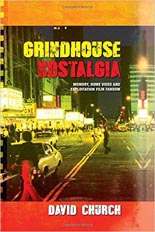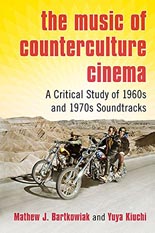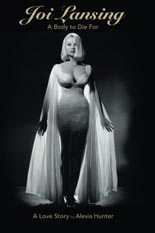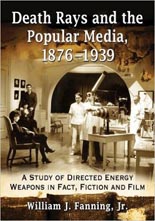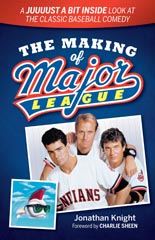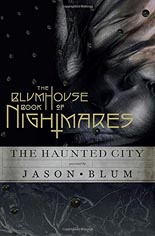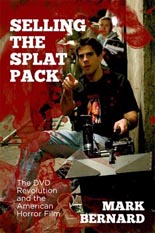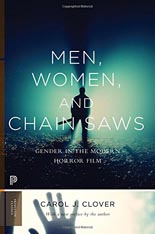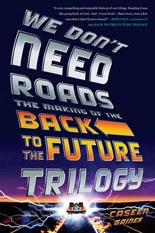
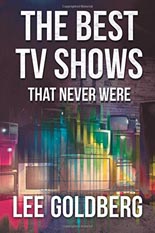 About a decade ago, while folding laundry, I watched a fun primetime special about TV shows that, for one reason or another (but mostly because they were bad), never made it past the pilot stage. What I didn’t know at the time was that hour-long special was based on a book! While that 1991 edition is now out-of-print, it has been revived, revised and republished as The Best TV Shows That Never Were by author Lee Goldberg under his aptly named Adventures in Television banner. (He simultaneously released two companion volumes, but we’ll get to those. Patience, my dear.)
About a decade ago, while folding laundry, I watched a fun primetime special about TV shows that, for one reason or another (but mostly because they were bad), never made it past the pilot stage. What I didn’t know at the time was that hour-long special was based on a book! While that 1991 edition is now out-of-print, it has been revived, revised and republished as The Best TV Shows That Never Were by author Lee Goldberg under his aptly named Adventures in Television banner. (He simultaneously released two companion volumes, but we’ll get to those. Patience, my dear.)
While boob-tube employment is no requirement for penning such a volume, it no doubt helped Goldberg, whose screenwriting credits include the aforementioned special, plus episodes of shows as varied as Monk, Diagnosis Murder, She-Wolf of London, SeaQuest 2032 and Baywatch. In other, dumber words, dude knows his teevee.
Covering programs from 1955 to 1990, The Best TV Shows That Never Were is an absolute hoot. Of the three books, it’s the one to get, if not the one with which to begin. Divided among categories like “Star Vehicles,” “Ghosts, Angels and Devils” and “Big Screen to Small Screen,” the shows include 300 false-starters, a few of which today live as standalone movies, such as Leonard Nimoy as an ESP-afflicted race-car driver in 1973’s Baffled! and the 1977 Exorcist rip-off starring James Farentino, The Possessed.
But mostly the book is filled with rotten eggs that only can wish they’d seen such light, however dim. An an alarming number of them:
• are set in space;
• star Granville Van Dusen or Barry Van Dyke; or
• involve a flatulent, crime-solving dog.
When Goldberg ventures into criticism for the entries, the results range from amusing to hysterical. Of ABC’s failed Al Molinaro sitcom of ’77, Great Day, he writes, “This pilot was supposed to illustrate how fun life is as a skid row bum in New York’s bowery. It failed.”
Also failed, to name but a few at random:
• “Wacky monks.” Mickey Rooney as a superhero. A jukebox that doubles as a time-travel device. Believe it.
• Kathleen Beller as a private eye assisted by a trio of animated clay figures. Believe it.
• The Starsky and Hutch spin-off, actually titled Huggy Bear and the Turkey. Believe it.
• The Beverly Hillbillies Solve the Energy Crisis. Believe it.
I mean, can you frickin’ believe it? I’m dying for a Volume 2, Lee.
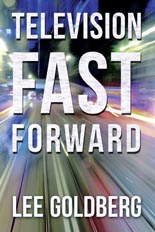 That latter pilot is part of Never Were’s chapter on retro revivals. If nostalgiasploitation rings your proverbial bell, then good news: Television Fast Forward is like an expansion of that section, trafficking in nothing but.
That latter pilot is part of Never Were’s chapter on retro revivals. If nostalgiasploitation rings your proverbial bell, then good news: Television Fast Forward is like an expansion of that section, trafficking in nothing but.
Covering the 1950s to the early ’90s, Fast Forward divvies the sequels up by source-material series and goes from there. For example, Gilligan’s Island contains items on its three Nielsen-smashin’ telepics: Rescue from Gilligan’s Island, The Castaways on Gilligan’s Island and, of course, the immortal The Harlem Globetrotters on Gilligan’s Island. (Where’s Gilligan’s Planet, you ask? In the appendix of animated adaptations, where it should be.)
Mileage varies depending on if the shows merit encapsulating; for some, Goldberg devotes pages, while others are lucky to get a sentence or two beyond perfunctory listings of the cast and crew. And quite honestly, I completely forgot The New WKRP in Cincinnati existed — all for the best, I’m sure.
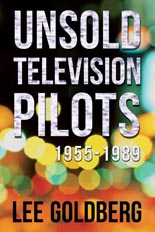 Finally, there’s the one most likely to give you a hernia: Unsold Television Pilots: 1955-1989. Weighing in at 3 pounds and 828 pages, it’s an intimidating monster … and yet, it’s not meant to be read in the traditional sense, because it’s a reference work. For each year contained in the range of the subtitle, Goldberg breaks the pilots out initially by production company and network, and later exclusively by the latter, with further categorization between comedies and dramas.
Finally, there’s the one most likely to give you a hernia: Unsold Television Pilots: 1955-1989. Weighing in at 3 pounds and 828 pages, it’s an intimidating monster … and yet, it’s not meant to be read in the traditional sense, because it’s a reference work. For each year contained in the range of the subtitle, Goldberg breaks the pilots out initially by production company and network, and later exclusively by the latter, with further categorization between comedies and dramas.
To say Unsold is exhaustive is an understatement; the index alone runs almost 150 pages! Admittedly of far narrower appeal than the other two titles, it best functions as a flipper atop the toilet tank. Flip to random pages with each movement and soak in the quick-take details on, say …
• the barbershop-set sitcom Handsome Harry’s;
• the Steven Spielberg-directed Savage, a vehicle for Martin Landau as an investigative reporter;
• William Friedkin’s action-packed C.A.T. Squad;
• or the incredibly titled Flatbed Annie and Sweetiepie: Lady Truckers, starring Annie Potts and Kim Darby.
Whatever you do, don’t miss the introduction, which gives a fascinating peek into the business of the pilot process — from someone who’s been there, no less. —Rod Lott

